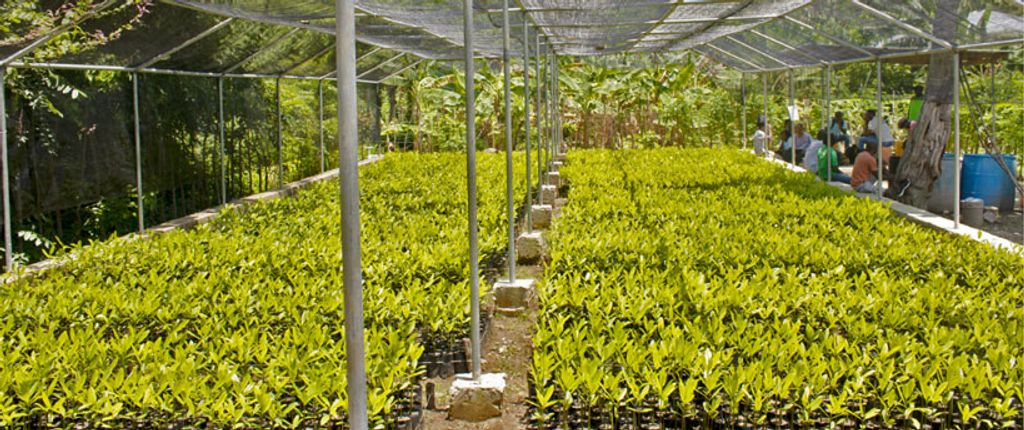
Climate adaptation and reforestation
Few other countries suffer from natural disasters as much as Haiti. In the aftermath of a disaster, the impoverished population faces particularly severe impacts. The country's vulnerability to natural disasters stems from a combination of its exposed geographical location and various environmental issues. Notably, rampant deforestation for charcoal production makes Haiti prone to landslides and increases its susceptibility to extreme weather events. This creates a vicious cycle that weakens Haiti's infrastructure, agriculture, and overall supply chain, making post-disaster reconstruction an immense challenge.
Collaborating with our partner organization AHAAMES, we support coastal communities in the Nippes and West departments by protecting and restoring mangrove areas. This initiative aims to enhance the resilience of the population.
Haiti is one of the three most weather-affected countries in the world, regularly facing natural disasters such as earthquakes and hurricanes. These calamities are worsened by the island's diminishing forests; only two percent of the country remains forested. Mangrove populations along the coasts have declined by up to 86 percent in some areas due to factors like charcoal production, which serves as a major source of income and energy but accelerates deforestation.
In our project areas in Nippes and Cité Soleil, mangrove forests face significant threats from ongoing deforestation. Mangroves play a vital role as carbon sinks, preserving biodiversity and stabilizing coastal soils. Their root systems help prevent erosion and serve as a natural buffer against flooding, thus contributing substantially to climate protection and disaster mitigation along Haiti's coasts.
- Enhancing the resilience of vulnerable populations.
- Developing local capacities in affected communities and with partners to safeguard natural resources and adapt to global warming.
- Preserving and restoring mangroves and other resilient plants in the project areas of the Nippes and Cité Soleil departments.
- Establishing sustainable economic alternatives to generate income for communities living near mangrove forests, aiming to reduce deforestation.
- Fostering knowledge sharing and creating systematic exchange mechanisms among experts and organizations to advance mangrove protection.
- Collaborating with local authorities and residents to restore mangroves and protect natural resources.
- Developing and implementing participatory plans for mangrove conservation and reforestation in the project communities.
- Establishing tree nurseries to reforest mangrove areas along the coastline.
- Building local knowledge and skills for sustainable resource conservation.
- Forming local environmental committees to drive community-led conservation efforts.
- Launching awareness campaigns to educate the public on the interconnectedness of environmental protection, climate change, nutrition, water, sanitation, and hygiene.
- Providing alternative income opportunities for participating families in sectors such as fishing, agriculture, beekeeping, and small animal husbandry.
- Improving access to credit and markets for project participants through the creation of savings and credit groups.
Country info
Captial: Port-au-Prince
Area: 27,750 km²
Population: approx. 11.5 million
Project data
Donors: German Federal Ministry for Economic Cooperation and Development (BMZ)
Partner: AHAAMES








